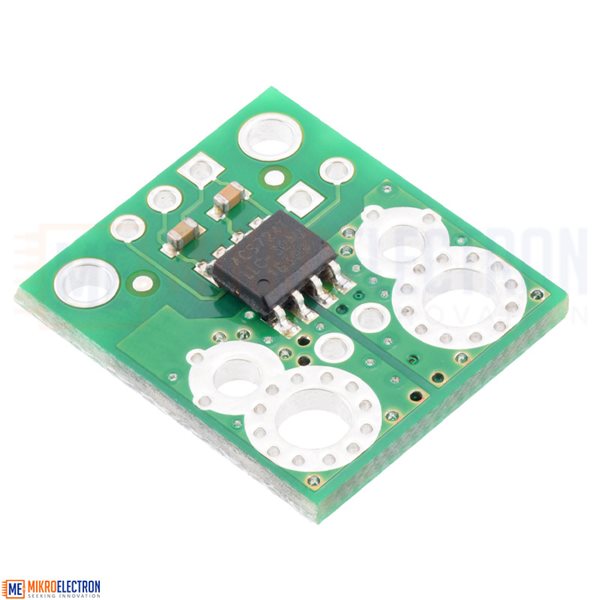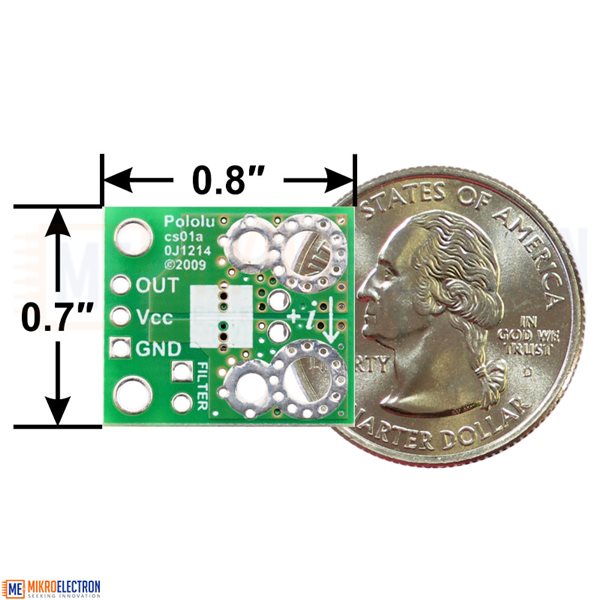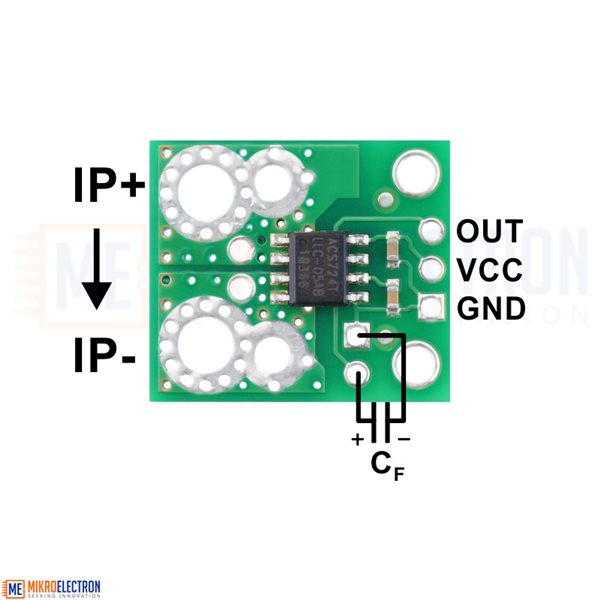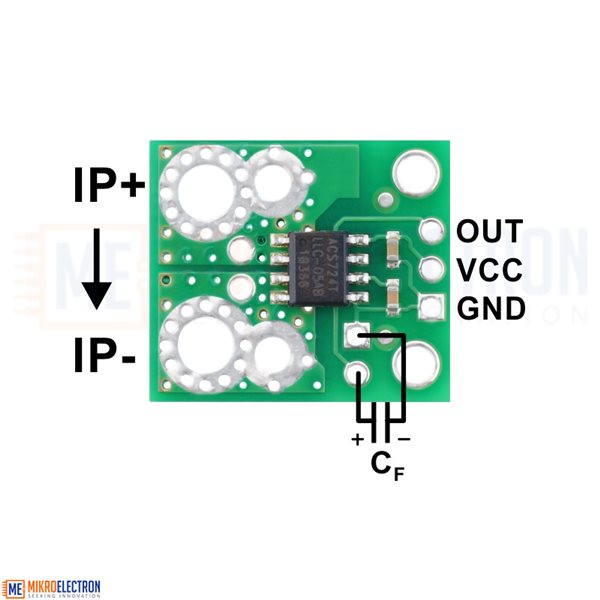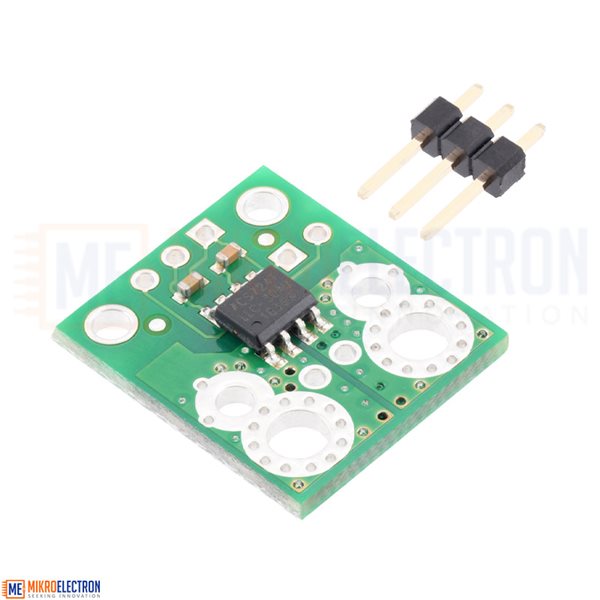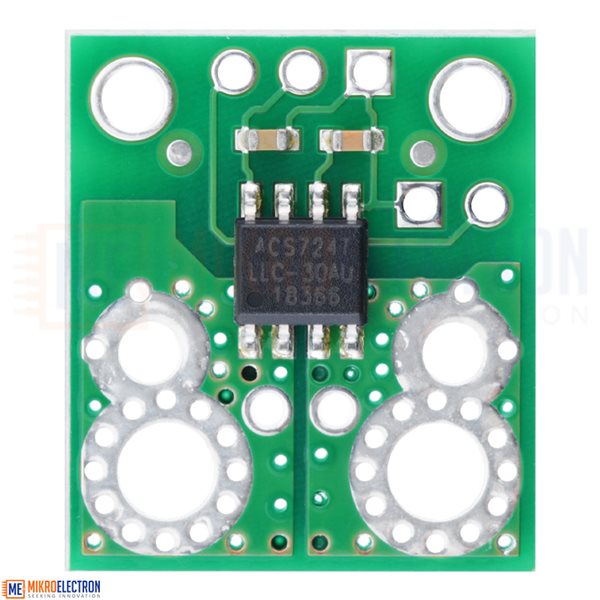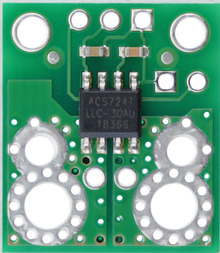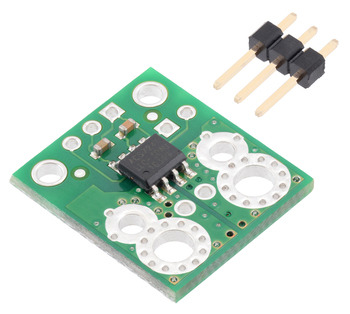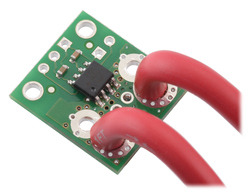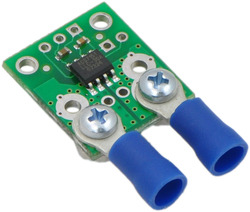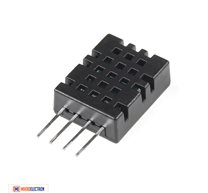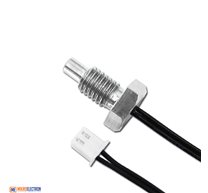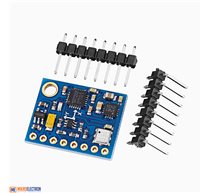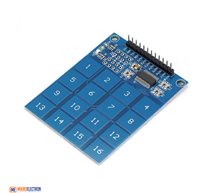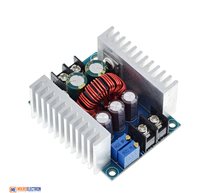Pololu ACS724 Current Sensor Carrier 0 to 30A
Description:
This board is a simple carrier of Allegro’s unidirectional 30A ACS724LLCTR-30AU Hall effect-based linear current sensor, which offers a low-resistance (~1.2 mΩ) current path and electrical isolation up to 2.4 kV RMS. This version accepts a unidirectional current input up to 30 A and outputs a proportional analog voltage (133 mV/A) that measures 500 mV when the input current is zero. The typical output error is ±0.7%. It operates from 4.5 V to 5.5 V and is intended for use in 5 V systems.
Overview
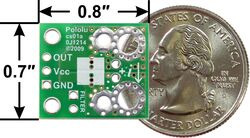 |
This current sensor is a carrier board or breakout board for Allegro’s ACS724 Hall effect-based linear current sensors; we therefore recommend careful reading of the ACS724 datasheet (1MB pdf) before using this product. The following list details some of the sensor’s key features:
The pads are labeled on the bottom silkscreen, as shown in the picture to the right. The silkscreen also shows the direction that is interpreted as positive current flow via the +i arrow.
We sell a ±5A bidirectional version, a ±20A bidirectional version, a ±50A bidirectional version, a 10A unidirectional version, and a 30A unidirectional version of this board, so you should consider adding your own distinguishing marks or labels if you will be working simultaneously with multiple versions. A white box is provided on the bottom silkscreen of the board to make labeling easier. You can also distinguish the versions by reading the text on the IC.
Details for item #4046
|
|
This carrier features the ACS724LLCTR-30AU-T, which operates at 5 V and is designed for unidirectional input current from 0 A to 30 A. When Vcc is 5 V, the output voltage is offset by 500 mV and increases by 133 mV per amp of input current. This ACS724 current sensor works as a drop-in replacement for our older Allegro 30A ACS715 current sensor in many applications.
This board ships assembled with all surface mount components, and a 3×1 strip of 0.1″ header pins is included but not soldered in.
Using the sensor
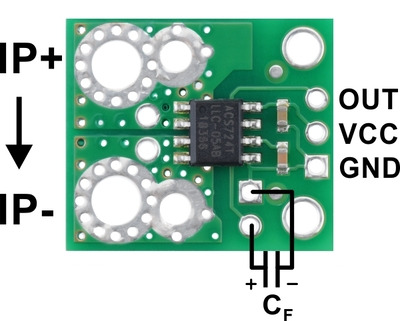 |
This sensor has five required connections: the input current (IP+ and IP-), logic power (VCC and GND), and the sensor output (OUT).
The sensor requires a supply voltage of 4.5 V to 5.5 V to be connected across the VCC and GND pads, which are labeled on the bottom silkscreen, and the sensor outputs an analog voltage that is linearly proportional to the input current.
The FILTER pin lets you adjust the board’s bandwidth by adding a capacitor to ground (a ground pad has been added next to the FILTER pin for convenience) in parallel with the 1 nF capacitor that is already on the board. Without an added external filter capacitor, the bandwidth is about 90 kHz. The datasheet provides more information on how the filter capacitors affect bandwidth.
You can insert the board into your current path in a variety of ways. For low-current applications, you can solder 0.1″ male header pins to the board via the smallest pair of through-holes on the input-current side of the board. For higher-current applications, you can solder wires directly to the through-holes that best match your wires, or you can use solderless ring terminal connectors. The largest pair of through-holes are big enough for #6 screws.
|
|
Features:
Related Products
subscribe to our weekly newsletter


